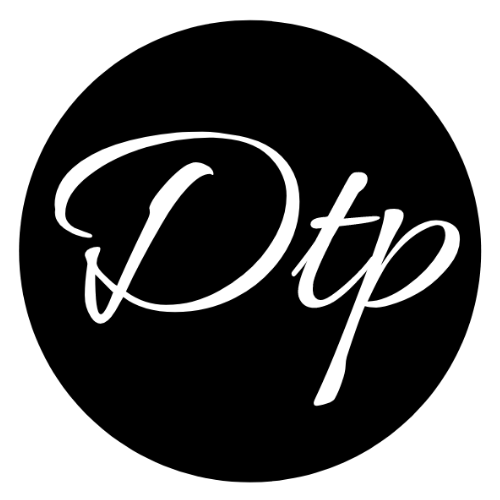DSST Foundations of Education Study Guide
- DTP Success Team
- Apr 3, 2022
- 4 min read
Updated: Feb 14, 2024
DSST Foundations of Education Exam Overview
The DSST Foundations of Education Exam allows students to earn college credits without attending traditional classroom courses.
The test consists of 100 multiple-choice questions that should be answered within a time limit of 120 minutes.
The exam is structured into three main sections:
1. Contemporary Issues in Education
2. Influences on Education in the Past and Now
3. Interrelationships
Covering various perspectives, such as historical, sociological, and psychological, the exam aims to provide a comprehensive understanding of education. It addresses foundational concepts and principles in education, as well as current debates and issues within the field.
To prepare effectively, reviewing the provided study guide is essential.
Additionally, practicing with sample questions and exams will help gauge readiness and identify areas for improvement.
Explore our study guide below if you're ready to prepare for the DSST Foundations of Education Exam.
Best of luck with your studies!
Table of Contents
1. Contemporary Issues in Education

Contemporary Education Issues
Several contemporary education issues are essential to educators, policymakers, and the general public.
These issues encompass equity, governance, curriculum, professional matters, and technology.
Each topic is complex and requires further examination.
Equity
Equity in education has garnered increased attention in recent years.
It aims to ensure that all students have access to quality educational opportunities regardless of their background or circumstances.
Factors contributing to educational inequities include poverty, language barriers, and discrimination. Addressing equity is crucial for enabling all students to realize their full potential.
Governance
Governance plays a pivotal role in education, encompassing the process of making policy and practice decisions.
Many stakeholders, including government officials, educators, parents, and students, are involved in governance.
Balancing the diverse interests of stakeholders while prioritizing students' best interests poses a significant challenge in the governance process.
Curriculum
Curriculum refers to the content taught in schools, continually evolving to incorporate new ideas and technologies.
Curriculum development aims to provide students with a relevant and engaging education.
Stakeholders involved in curriculum development include educators, parents, students, and community members.
Professional Issues
Professional issues pertain to educators' working conditions and professional development.
Challenges such as teacher burnout, inadequate compensation, and insufficient administrative support must be addressed to attract and retain high-quality educators.
Technology Issues
The integration of technology in education presents both opportunities and challenges.
Technology can enhance instruction, assessment, and communication in schools.
However, equity, integration, and support challenges must be navigated to ensure equitable access to technology and its effective educational utilization.
DSST Foundations of Education Trivia Question # 104
2. Influences on Education in the Past and Now

Historical Influences on Education
Throughout history, myriad philosophies, theories, and ideologies have shaped the field of education.
These influential ideas have ranged from classical philosophies like Plato and Aristotle to modern educational theories like constructivism and behaviorism.
Demographic Shifts and Multiculturalism
Demographic changes have increased the emphasis on multiculturalism and bilingual education in schools.
With increasingly diverse student populations, educators are tasked with promoting inclusivity and celebrating cultural diversity in the classroom.
Globalization and Technological Advancements
The rise of globalization has underscored the importance of equipping students with skills in science, technology, engineering, and mathematics (STEM).
Students must possess a global perspective and proficiently navigate digital technologies in an interconnected world.
Educational Policy in the 21st Century
As the world continues to change rapidly, educational policies are expected to evolve to meet the needs of 21st-century learners.
This may entail shifts towards more personalized and student-centered approaches to education and greater technology integration in teaching and learning.
The education landscape continually evolves, influenced by historical perspectives, demographic shifts, and technological advancements.
To prepare students for success in an ever-changing world, educators must remain attuned to emerging trends and adapt their practices accordingly.
3. Interrelationships Among Schools, Families, and Communities

Balancing Tradition and Progress
In an age of global interconnectedness, schools play a crucial role in preparing students for the complexities of the 21st century.
However, balancing preserving traditional values and embracing progress is essential for providing a comprehensive education.
National vs. Local Control
The ongoing debate over national versus local control of schools highlights the need for community autonomy in shaping educational policies.
While both approaches have merits, communities must determine the best action for their needs and priorities.
Secular vs. Religious Education
The role of religion in schools remains a contentious issue, with divergent perspectives on its inclusion in education.
While some advocate for religious teachings in schools, others emphasize the importance of maintaining secular environments that respect diverse beliefs and backgrounds.
Civil Rights in Education
Ensuring equal access to quality education for all children is a fundamental civil rights issue.
Addressing systemic inequalities based on race, ethnicity, and socioeconomic status is paramount for creating inclusive learning environments and closing the achievement gap.
Public vs. Private Education
The decision between public and private schooling is a significant consideration for many families.
While both options offer distinct advantages and disadvantages, families must weigh various factors to determine the best educational fit for their children.
Navigating complex issues such as national versus local control, secular versus religious education, and public versus private schooling requires careful consideration and collaboration among stakeholders.
Schools can effectively prepare students for success in a rapidly changing world by prioritizing equity, inclusivity, and educational excellence.
DSST Foundations of Education Trivia Question # 294
4. Conclusion

DSST Foundations of Education
When preparing for the test, a comprehensive guide can be invaluable.
Given the exam's breadth and the diversity of topics, we strongly advise students to utilize our online course to thoroughly review what to anticipate, ensuring no surprises on test day.
Please take advantage of our complimentary practice tests to familiarize yourself with the types of questions you'll encounter and enhance your readiness to excel.
Consistent and diligent study habits are essential.
Regular review sessions will significantly increase your likelihood of achieving success.

